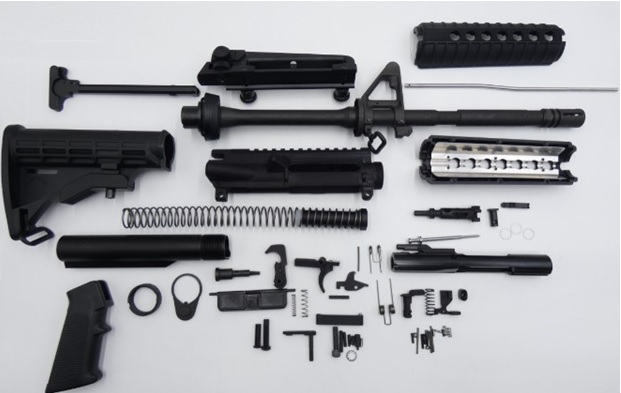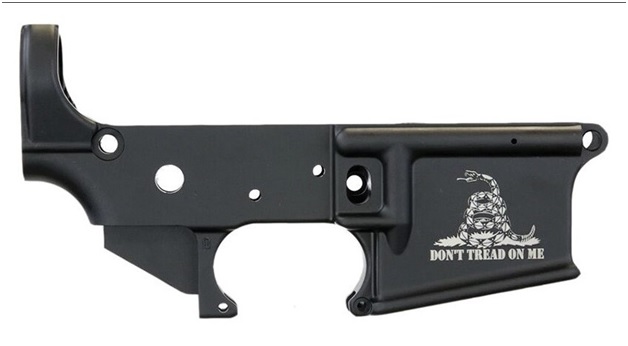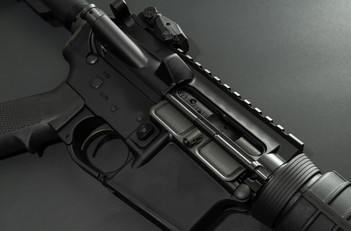Building with an AR15 Kit: Questions, Answered
Aug 11th 2023
If you didn’t notice, ammo, gun parts, and guns are all in short supply. It’s been like that ever since the events of 2020 collectively inspired a cascade of panic buying that descended upon the gun industry.
Things just haven’t quite been the same ever since, and gun shops are low in ammo, parts, and in some cases, even guns.
So, for some shooters, reloading ammo or making their own builds at home is the solution to these shortages.
Take America’s Rifle, for instance, the AR15. If you have the knowledge and the tools, you can make your own with a lower, an AR15 kit, and some tools (and a jig, if you start with a blank).
Here’s what you need to know.
How Much Does It Cost to Build an AR15 with a Kit?
That depends on how much you pay for parts, but generally, a lot less than it would cost to buy the rifle.
Check out the following AR15 kit that comes with everything you need minus the lower receiver. The parts kit itself is $385.
You’ll also need a lower receiver, such as the following Anderson lower. It’s finished and ready to assemble and costs $89.
So, all told, minus the cost of your time and tools, you’re in for less than $400.
Though it’s not quite an apples-to-apples comparison, consider the Windham Weaponry M4A3, which has a sticker price of $799.
It’s close enough that you can make a comparison; as you can see, if you build it yourself, you can save quite a bit.
What Comes with an AR15 Kit?

That depends on the AR-15 rifle kit you buy, but if you take a look at the kit we linked to above, you can see that it comes with everything you need to complete a build minus the lower receiver.
This includes but is not limited to a handguard, upper receiver (and all the parts that constitute an upper assembly), bolt carrier group, trigger assembly, and all internal parts.
It does not come with an AR 15 lower receiver or a magazine, so you’ll need both of those things.
Since the kit does not come with a lower receiver, it is not considered a firearm and does not require an FFL transfer.
What Else Do You Need with an AR15 Kit?
The other key component you will need to build your own AR15 is a lower receiver. This is the part that is serialized and regulated by the ATF as an actual firearm.
If you buy a completed AR15 lower receiver with the pin holes and spaces for the fire selector unit and trigger assembly completed, you will be purchasing a “firearm” which will require an FFL transfer.
If you buy a receiver blank, you will need a jig kit and a router or drill press to finish machining the receiver.

Receiver blanks are the subject of ongoing legislative changes, and they are not legal in all states (see below).
However, a receiver blank is a receiver that is made of aluminum (either forged or machined from a billet) that is not finished and cannot accept a trigger group or fire selector lever.
To complete it, you will need a jig kit, which basically serves as a template and holds the lower in place while you machine out the necessary channels, either with a router, drill, or drill press. The jig is like a “stencil” that makes it easier to complete the lower.
About Bolt Carrier Group Finishes
The build kit mentioned above does come with a bolt carrier group (BCG) but this is one of the most commonly upgraded parts on AR-style builds.
The default coating is a phosphate (mil-spec) coating. These are easy to care for and affordable, but they don’t offer the same permanent dry lubricity of modern BCGs with advanced coatings.
If you’re looking for a high quality bolt carrier group upgrade, consider a model with a hard chrome, black nitride, nickel boron, or titanium nitride.
All of these advanced coatings offer superior permanent dry lubricity, are easier to keep clean, and require less liquid lubrication.
Is It Legal to Build Your Own Rifle?
The ATF recently changed its ruling on what constitutes a “ghost gun” and in forthcoming months, sellers and dealers are going to need to serialize any unserialized firearm frames/receivers before sale.
This change in their ruling may require serialization of and FFL transfers for all lowers, even lower blanks. However, this does not constitute legal advice; if you are uncertain of the legality of building your own rifle, please defer to a firearms lawyer.
Also, be aware that there are several states around the country where unserialized lowers are illegal. These include the following states, but be aware that this list can change as laws change:
- California
- Connecticut
- Delaware
- Washington, D.C.
- Hawaii
- Illinois
- New Jersey
- New York
- Rhode Island
- Washington
Again, if you have questions, consult a firearms lawyer before purchase.

